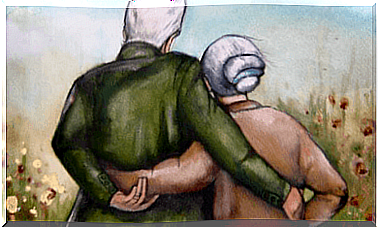Evolution Of The Treatment Of Mental Problems

In the same way that technology advances and science discovers new processes to make our lives easier, psychology is no different and the treatment of mental problems has changed over time.
Initially, psychology treated mental health problems with first-generation therapy, which consisted of employing the mechanisms of learning and “unlearning”, ie action-reaction behavior. The stimulus and our learning experience determined our response.
On the other hand, the responses reinforced or became more likely with forced repetitions. Any conduct that was learned quickly came with a reward and ran up one place in one’s repertoire of responses. On the other hand, the extinction of a response occurred when it ceased to be rewarded and this extinction occurred earlier if the response was punished.
This first generation served to understand one of our most primitive learning mechanisms: conditioning. Logically, one of the branches that most evolved under this paradigm was educational psychology, which found in these ideas a simple way to articulate a teaching model based on reward and punishment. It also served to understand the various more or less strong associations that we create between the various stimuli.

Evolution of the treatment of mental problems
Second generation therapies
With the passage of time and years, the treatment of mental problems has evolved and so-called second generation therapies have appeared. What did they consist of?
We realized that we did not always act by association of stimuli and response, but that between these two it mediated something, but what? The brain, emotions, cognition, desires, the individual essence.
This is why our way of thinking takes on so much importance in second generation therapies. We are what we learn, but also what we build from what we learn. In this conception we stop being passive and become active, in such a way that our scope for implementation multiplies.
Cognition allows us to face the world in one way or another. That is to say, reality is important, but the way we perceive that reality and the interpretation we make of it is even more important. In second generation therapies, one begins to work on attitude, emotions and desires.
Understanding that we are much more than machines that respond according to what we have learned has allowed us to focus on the study of the mind itself: a serious intent to understand what causes the appearance of certain disorders or why we experience some paradoxical phenomena: for example, because a stroke of luck makes a person feel sad.
This new way of understanding our behavior has allowed us to take a step towards a problem that continues to worry us today: mediation. Back then it was easy to know how far apart two places were, but it was not easy to determine the degree of anxiety a person might experience.
Third generation therapies
In more advanced times, and the working method was also modified, not all mental health problems had a satisfactory solution, therefore third generation therapies arose.
These therapies meant that it was not the way to solve the problem that was wrong, but our relationship with it. For this reason, work began trying to integrate the difficulties, without trying to solve them directly. The goal was to make sure that problems that had no solution or that did not present an instant solution remain present, without occupying or damaging the life of the subject. Among these we find the most recent, the most established and the most vigorously growing therapies, such as Mindfulness, acceptance therapies, etc.

However, the scientific study of their effectiveness is very complicated. This means that third generation therapies are professed by serious psychologists, but also by charlatans and people without any training. For this reason, they arouse some rejection in some areas of academic psychology.
We did a little review of the three generations of psychological therapies. The different varieties concerning conduct, thoughts and emotions have brought us different points of view, which undoubtedly enrich us.
Knowing better how the treatment of mental problems has changed and how the working method in psychology has evolved, it is easy to understand its vastness. Furthermore, correctly understood, this heterogeneity of points of view is certainly enriching for the psychologist, who obtains different tools from each generation that he can use during therapy.









